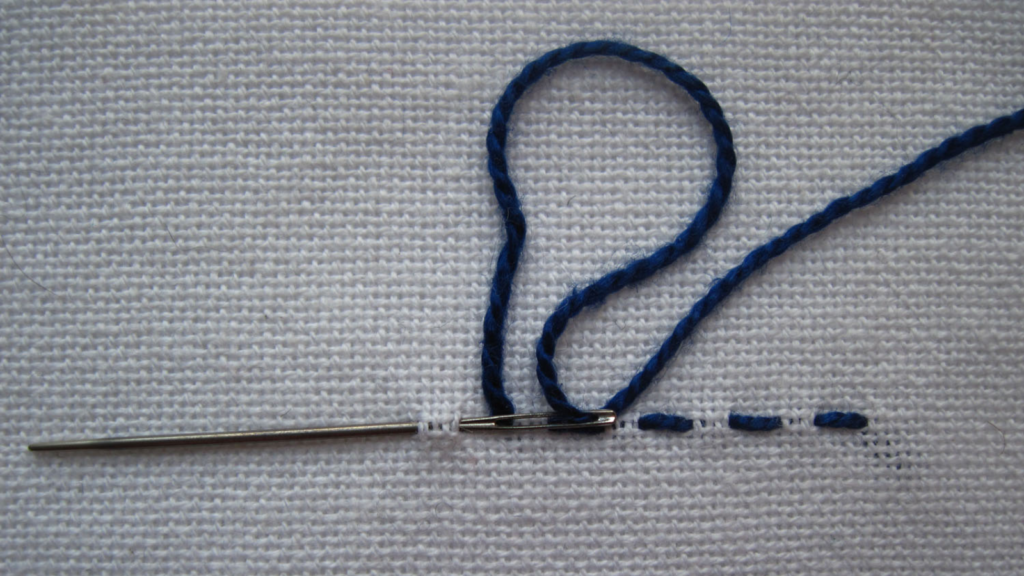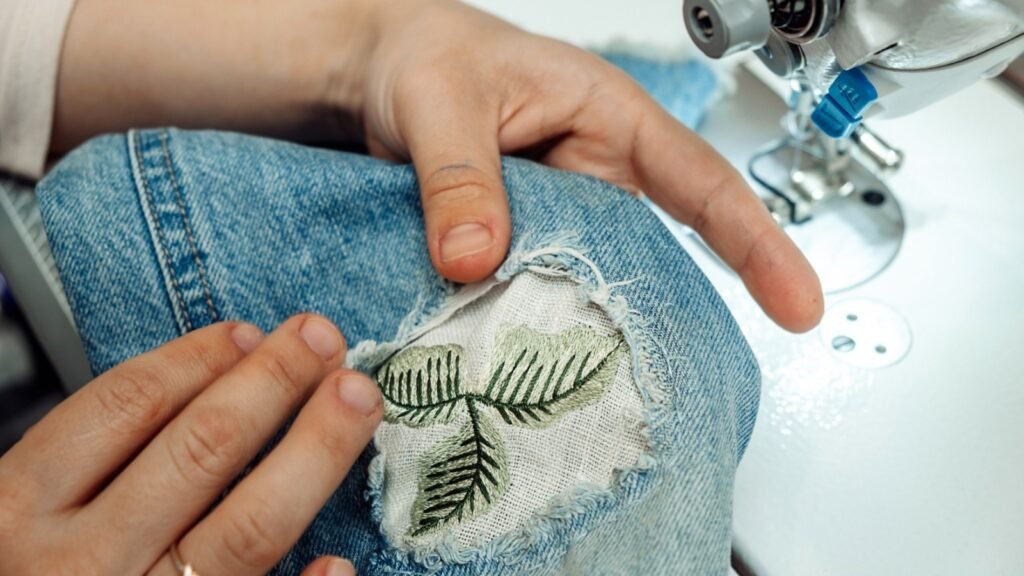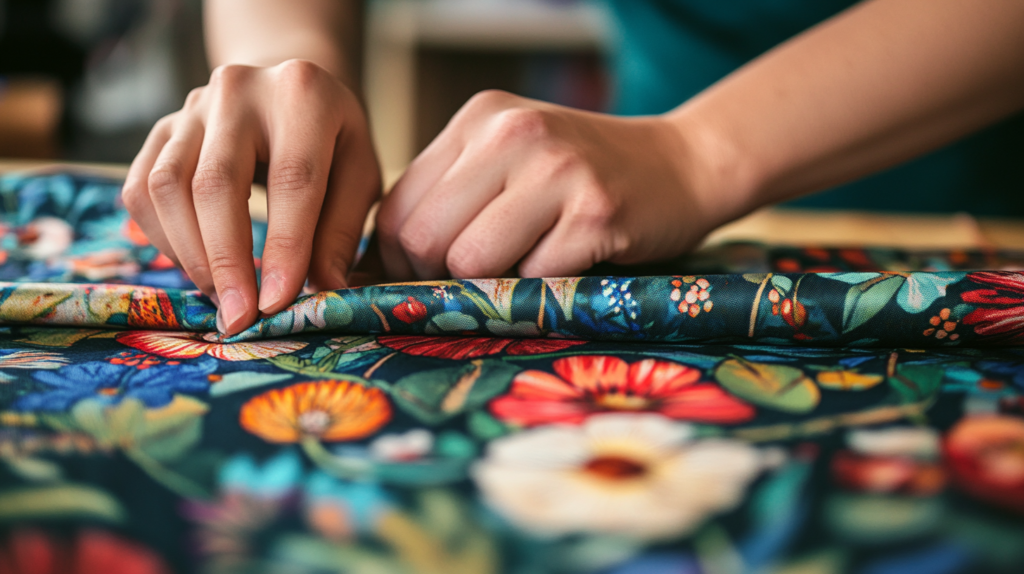In a survival situation, a few strong, reliable stitches can make all the difference. When resources are scarce, knowing how to sew isn’t just a hobby—it’s a practical survival skill that can extend the life of clothing, help you keep warm, and create makeshift shelter when you’re out in the elements. When you can sew, you have the power to mend, craft, and adapt what you have to meet your needs, which means fewer trips to the store or having to scavenge supplies.
Mastering some basic sewing skills gives you control over your gear and the security of knowing that you can fix what breaks, customize what you’ve got, and prevent your essentials from falling apart. Whether it’s clothing, outdoor gear, or even first aid items, sewing skills can bring you peace of mind—and that’s priceless when you’re on your own.
1. Threading a Needle

Learning how to thread a needle is the first step for any sewing project. In a survival scenario, you may not have all the tools you’d find in a kit, so understanding how to do this with limited light or resources is essential. Practice threading by hand to improve your efficiency and speed, so you’re not struggling when time matters.
2. Basic Stitch Types

Mastering a few basic stitches, like the running stitch, backstitch, and whipstitch, will cover most repair needs. These stitches provide different levels of strength and flexibility, allowing you to repair or create items suited to different conditions. Knowing which stitch to use can make repairs last longer and hold up under more strain.
3. Patching Holes and Tears

Tears in clothing or tents can be a serious issue when you’re relying on them. Learning to patch holes using sturdy stitches and proper technique will help prevent damage from getting worse. A good patch can help insulate, waterproof, and extend the life of your gear.
4. Sewing on Buttons

When buttons come loose, they can make clothes and equipment nearly unusable. Knowing how to securely sew a button back on—using a cross or shank method for durability—will keep your clothes functional. This skill also applies to similar fastenings, like toggles and clasps.
5. Reinforcing Seams

Heavy-duty use of clothing or bags can cause seams to weaken over time. Reinforcing seams with a double stitch or an extra line of stitching can keep things from falling apart when you need them most. This skill can be used on everything from backpacks to raincoats, making it extremely versatile.
6. Creating Simple Repairs on Zippers

Zippers are often a weak point on outdoor and survival gear. Knowing how to perform simple repairs, like adjusting the slider or hand-sewing over broken teeth, can make a broken zipper functional again. In many cases, these quick fixes can buy you more time until a full repair is possible.
7. Making Rope or Cord from Fabric

If you’re low on rope, you can make simple cordage by twisting or braiding fabric strips. This skill is useful for crafting items like handles, ties, or makeshift ropes. Learning different knotting techniques with this homemade rope can expand your options for securing items or building temporary shelters.
8. Sewing Waterproof Seams

A waterproof seam is crucial for rain gear, tarps, or tents. With the right stitch and waterproof materials, you can create a seam that won’t let water through. Practicing this on small pieces of fabric is a good way to learn the technique for larger applications.
9. Sewing Gloves and Mittens

Cold hands are uncomfortable and can lead to serious issues in freezing conditions. If you know how to sew gloves or mittens from durable materials, you can protect yourself from the elements. This skill can be invaluable when you’re without proper gear and need to create your own.
10. Making Quilted Layers for Insulation

Quilting multiple layers of fabric is a fantastic way to create warmth. By stitching together layers with padding inside, you can make blankets, vests, or even sleeping bags. This skill can help you stay warm in cold environments without requiring factory-made materials.
11. Repairing Leather

Leather is durable and ideal for outdoor use, but it can still tear or wear thin. Learning how to repair leather, including techniques like saddle stitching and using strong, waxed thread, will let you fix shoes, belts, and even parts of shelters. A well-executed leather repair can significantly extend the life of these items.
12. Hemming Fabric

Hemming allows you to finish raw fabric edges to prevent fraying and create a clean, durable edge. This skill is perfect for making improvised clothing, bedrolls, and bags, ensuring that your work holds up to wear and tear. Hemming can also be used to repurpose materials to fit specific needs.
13. Making a Simple Bag

Having a reliable way to carry items is invaluable. Knowing how to create a simple bag from fabric, using a few basic stitches and reinforced seams, can help you make storage for food, water, and supplies. Bags can also be made in different sizes depending on what you need to carry.
14. Crafting a Sling or Bandage

Injuries happen, and being able to make a sling or bandage from available fabric can be lifesaving. This skill involves wrapping and stitching fabric to fit securely around an injured limb. With the right stitching, you can make a sling that provides proper support and helps prevent further injury.
15. Creating Shelter Repairs

If you’re using tents or tarps, they’ll eventually show wear, and being able to repair them on the spot can mean the difference between staying dry and dealing with water leaks. Learning to sew repairs on different materials and attach patches can help you maintain your shelter over the long term.

